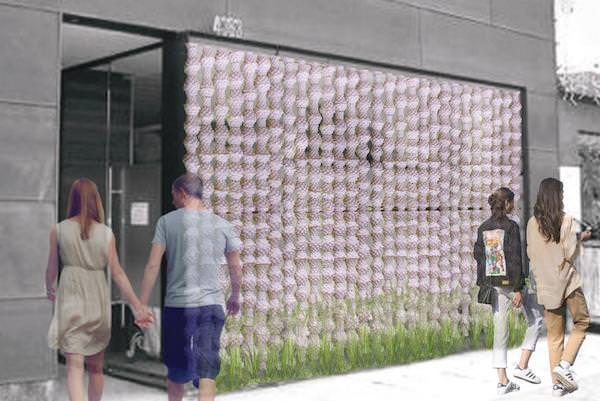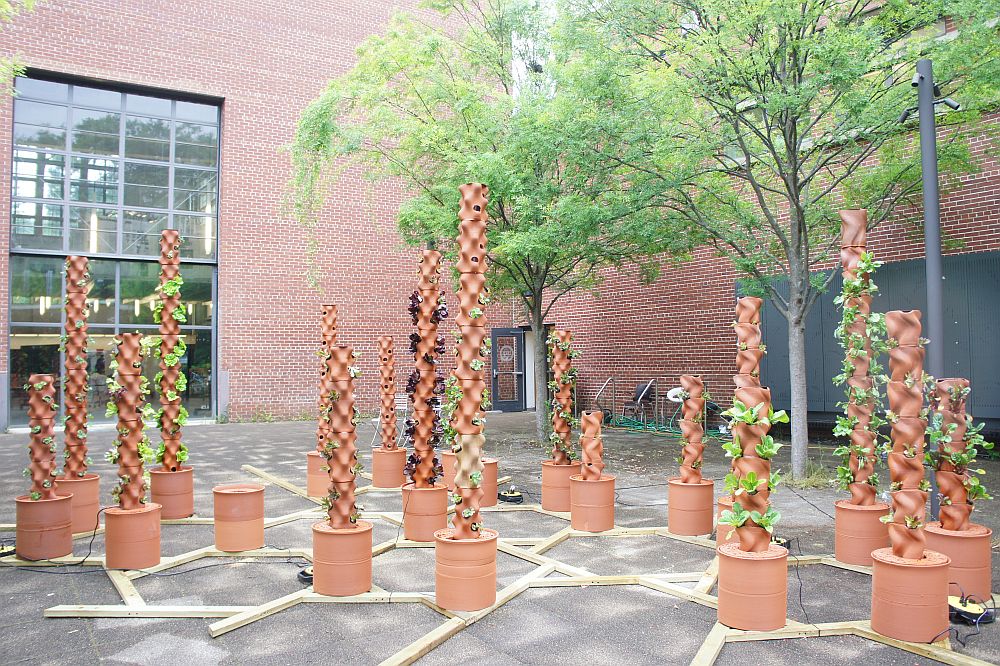
[Image above] An artist’s rendering of Mashrabiya 2.0, illustrating how it is integrated into a building’s façade. Credit: International Masonry Institute
3-D printing has come a long way in the ceramics industry. Just a couple years ago, researchers invented a resin that can be 3-D printed and fired into a dense ceramic.
About that same time, another company applied for a patent for a 3-D printer design that uses compression to create a stronger, denser ceramic object.
In fact, several companies showed off their ceramic 3-D printing capabilities at an international additive manufacturing exhibition more than a year ago.
So where is 3-D-printed ceramics technology headed?
A team of faculty and staff from Iowa State University’s architecture department have now taken 3-D-printed ceramics a step further. Inspired by Arabic lace screens, they created a 3-D-printed ceramic façade that can be used as part of a mechanical system to control the amount of light, privacy, airflow, and cooling in a building.
The project, titled “Mashrabiya 2.0,” earned a $10,000 award at the inaugural Joan B. Calambokidis Innovation in Masonry Competition earlier this month. The competition, open to architects, engineers, students, and firms, recognizes and awards innovative approaches to energy efficiency, resiliency, sustainability, and mass customization, according to the International Masonry Institute’s website. The jury panel consisted of renowned architects and leaders in the masonry industry, an Iowa State University news release states.
The team created a mockup of 140 individual 3-D printed ornamental disks made on a machine called a Potterbot, Leslie Forehand, title lecturer in the Department of Architecture and team member, explains in a phone interview. “The Potterbot was actually designed by a ceramicist,” she says.
The disks wrap around pipes with tiny holes that are connected to a building’s water system. “We proposed that the system would spray water on the ceramic, keeping them cooled. It’s passive cooling and shading,” she explains.

Mashrabiya 2.0 uses 3-D printed ceramic disks that cover a pipe to ventilate a building. Credit: International Masonry Institute
An artist’s rendering of Mashrabiya 2.0 shows how it can be incorporated into the façade of a building. Water in the pipes saturates the ceramic disks, while air blowing through the façade ventilates and cools the building.
Forehand had previously lived in Qatar while working in fashion design and graphics in the Department of Research at Virginia Commonwealth University. That’s where she got her inspiration for the design of Mashrabiya 2.0. “Mashrabiya is a shading device that’s typically made of wood and incredibly common in Arabic culture,” she says. “They’re installed in windows to create privacy and shade.”
When asked if they plan to scale their project or work with a manufacturer, Forehand commented that initially they hadn’t considered it. “But now we’re looking into it for the first time,” she says. At the competition in Miami, Fla., Forehand says she and her team were approached by manufacturers who were interested in their project.
“They told us that our method was time consuming,” she says, referring to the 3-D printing of individual ceramic disks, “but we could move forward with different fabrication processes. Different manufacturers talked to us about more efficient ways to mass produce Mashrabiya 2.0.”
As to what’s next for the team, Forehand says they plan to continue focusing on ceramics. She plans to use her share of the award to purchase her own 3-D ceramic printer to continue her research of the technology. “It’s something I’ve been passionate about since 2014,” she says.
“It was incredibly encouraging to find something that we do, which is pretty exploratory, to be well received in the industry,” Forehand asserts. “We are also honored to be considered for this and are definitely moving forward.”
Watch the video below to learn more about Mashrabiya 2.0.

Credit: International Masonry Institute, YouTube
Did you find this article interesting? Subscribe to the Ceramic Tech Today newsletter to continue to read more articles about the latest news in the ceramic and glass industry! Visit this link to get started.
Author
Faye Oney
CTT Categories
- Construction
- Education
- Environment
- Manufacturing
Spotlight Categories
- Member Highlights


